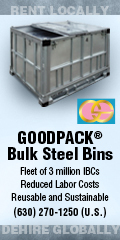
| Archives/Subscribe | www.clfp.com | Contact Us | April 1, 2014 |
CLFP Supports Strong Oversight on Auction Fund Expenditures
The Governor's 2014 Budget proposes to invest $850 million of cap-and-trade auction proceeds to support existing and pilot programs that will "promote GHG reductions and meet SB 535 goals." This amount includes the repayment of $100 million that was loaned to the General Fund in 2013-2014. To date, CARB has conducted six auctions since November 2012 of GHG emission allowances as part of the market-based compliance mechanism. These auctions resulted in approximately $663 million in proceeds to the state. California’s cap–and–trade program is expected to raise billions of dollars in auction revenues from 2012 through 2020. The actual amount of revenue that will be raised is difficult to predict, particularly because of the uncertainty about future allowance prices and the number of allowances that may be sold. Using CARB’s floor and ceiling prices for allowances, and assuming that CARB provides 60 percent of all allowance for free, the total cap–and–trade revenues from all auctions through 2020 could range from $12 billion to $45 billion. According to the Legislative Analyst's Office (LAO), several economists who have evaluated California’s cap–and–trade program have estimated that, over the life of the program, average allowance price may be in the $15 to $20 range. If this were to occur, total revenue for the program through 2020 could be roughly $15 billion. CLFP has joined with other industry groups in discussing with State legislative staff the importance of investing cap-and-trade auction revenues so that they maximize greenhouse gas emission reductions in the industry sectors that bear the compliance obligation. CLFP supports the development of criteria that would prioritize the availability of auction funds to favor projects proposed by industry facilities over projects proposed by non-obligated entities. Additionally, CLFP is urging the development of criteria that proposed projects must meet in order to be eligible for funding. Finally, CLFP supports active oversight of all projects funded with auction dollars to ensure that the money is not misused or funneled into other non-AB32 activities. Currently, the Governor’s proposed budget lays out his vision for use of the funds in his Cap-and-Trade Expenditure Plan however, none of the proposals call for any funding criteria or cites the need for oversight in the use of the funds. |
|
| CALIFORNIA LEAGUE OF FOOD PROCESSORS 2485 Natomas Park Dr., Suite 550 Sacramento, CA 95833 Phone: (916) 640-8150 Fax: (916) 640-8156 www.clfp.com |
 |
